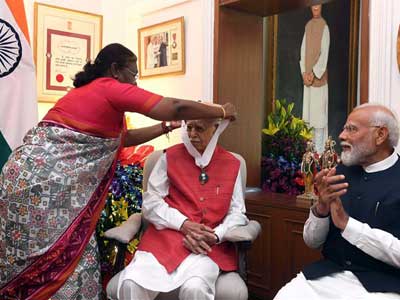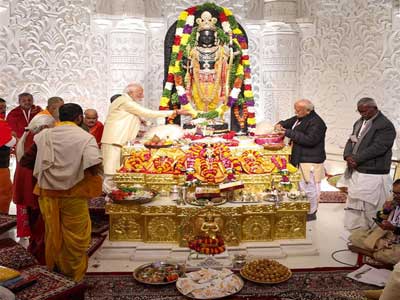"The Blue Drum Case", "The Cement Bag Murders", and "The Snake Bite Conspiracy"—these chilling headlines read like plots from a crime thriller but are real-life cases exposing a grim reality in urban India.
In each case, women, often with their lovers, were convicted of murdering their husbands. These incidents highlight a disturbing trend of domestic violence perpetrated by women, challenging traditional narratives and exposing complex power dynamics in modern Indian marriages.
हिंदी में पढ़ें : भारत में घरेलू हिंसा के बदल रहे हैं मानक...!
While domestic violence has historically been viewed as a crime against women, recent cases reveal that men, too, are vulnerable to emotional, physical, and even lethal abuse. This emerging pattern, driven by shifting social norms, financial independence, and strained marital bonds, raises urgent questions about the sanctity of marriage and the need for a gender-neutral approach to justice.
Sociologist Prof Paras Nath Choudhary observes, "These cases reflect calculated conspiracies where extramarital partners often play a pivotal role, either encouraging or directly participating in violence. The impact extends beyond physical harm, leaving emotional trauma and societal stigma in its wake. Domestic violence is no longer a gendered script—it's a human crisis."
India’s social landscape is transforming rapidly. Urbanisation, nuclear family structures, and declining joint family systems have dismantled traditional mechanisms for resolving marital disputes. Where elders once mediated conflicts, couples now face tensions in isolation, often escalating to extreme outcomes.
Social Analyst REC Pandey explains, "The erosion of joint families, coupled with changing gender roles and reduced stigma around divorce, has reshaped power dynamics. Financially independent women and urban lifestyles have empowered individuals, but this autonomy sometimes manifests in destructive ways, including violent conspiracies.
National Crime Records Bureau 2022 data reveals a nuanced picture. While crimes against women remain predominant, with 4,45,256 cases, including 1,40,000 under IPC Section 498A for cruelty by husbands or relatives, crimes against men are underreported. The NCRB notes 21,579 male suicides linked to ‘marriage-related issues’, though no specific category tracks domestic violence against men. Experts estimate that targeted violence against husbands, often tied to extramarital affairs or financial motives, is rising but remains obscured by social stigma and legal biases.
Women’s empowerment has been a cornerstone of India’s progress, with increased financial independence and social autonomy. However, this shift has a darker side. Social Activist Mukta Gupta warns, "While empowerment is transformative, it can lead to misuse of autonomy in rare cases. Financially independent women, emboldened by urban anonymity, may engage in deceit or violence, often with lovers as accomplices, to resolve marital conflicts permanently."
The NCRB 2022 data highlights a 33.9 per cent rise in cases filed under IPC Section 498A and the Dowry Prohibition Act from 2017-2022. However, men’s rights groups argue that Section 498A, designed to protect women from cruelty, is frequently misused to harass husbands and their families.
Legal Scholar TP Shrivastav notes, "The decline of joint families has turned homes into battlegrounds. Elders, once mediators, are now sidelined or implicated in legal disputes. Nuclear families and individualistic values exacerbate tensions, with laws like 498A sometimes weaponised.
NCRB data shows a 33.9 per cent increase in divorce cases (2017-2022), reflecting evolving attitudes. Overburdened courts, inadequate legal aid, and flawed police investigations contribute to low conviction rates, fueling narratives of ‘false cases’. A Bengaluru study found 72.5 per cent of 498A cases resulted in anticipatory bail, suggesting arrests are rare, yet the stigma of accusation lingers.
The NFHS-5 (2019-21) reveals 31.9 per cent of married women face domestic violence, but only 6.3 per cent seek police help, indicating underreporting. Conversely, male victims face similar barriers, with societal expectations of masculinity discouraging reporting. The UN’s 2024 femicide report notes that 60 per cent of women killed globally die at the hands of partners or family, but men, too, face intimate partner violence, though data remains sparse.
To address this multifaceted crisis, India needs Gender-Neutral Laws. Activist Rajiv Gupta concludes, "Indian society is at a crossroads. Women’s empowerment is a triumph, but it must be paired with accountability. Domestic violence is a human issue, not a gendered one, and demands empathy and fairness for all."


















Related Items
India stuck in traffic; Cities halt, Horns holler, and time takes a nap
Urban Highways prioritised, Pedestrians and Cyclists ignored…!
India’s deep dark fraud economy unveiled…